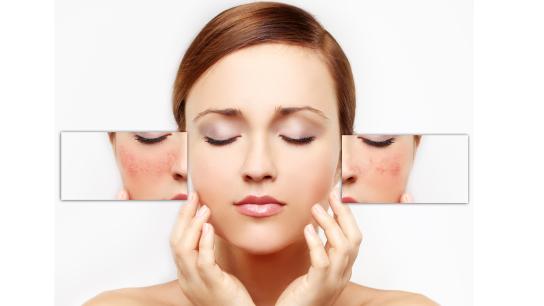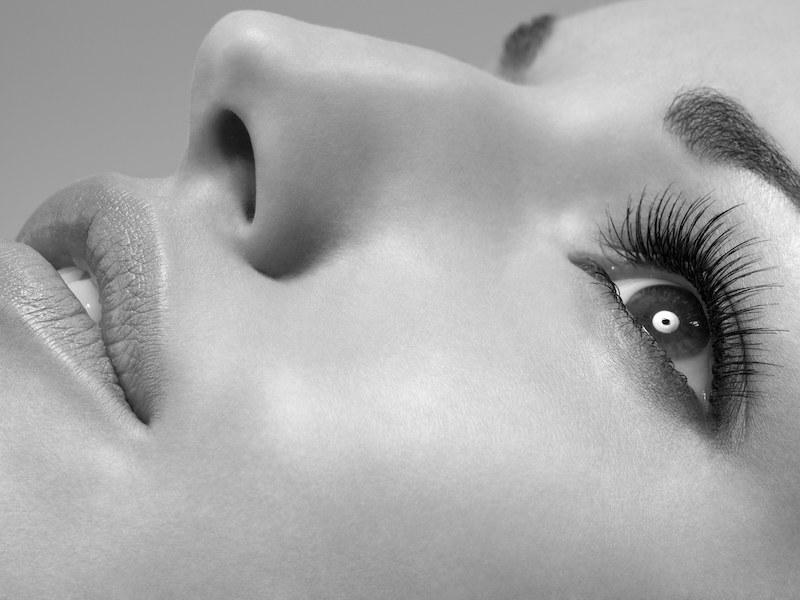
Just like a broken heart, broken capillaries aren’t literally broken. Sure, you might feel aching loss and devastation at the discovery of red spidery veins creeping across your once flawless cheek or climbing up the side of your nose. You may even fall into despair over a ruddy looking complexion overrun with the broken beasts, but despite the “broken” moniker, it’s not necessarily true.
Causes:
The walls of your capillaries are elastic and flexible, they dilate and reverse more than a line dancer at a country hoedown. Broken capillaries (or spider veins) are simply capillaries that have been dilated and undilated so much that they can’t even anymore. And the reasons for that are vast: genetics, trauma to the skin, aging, inflammatory conditions like rosacea, obesity, sun exposure, hormonal changes, birth control, too much alcohol, spicy foods, coughing, sneezing, standing too long, looking at the capillary cross-eyed… okay, maybe not that last one, but… you just never know. Capillaries are fickle things. And once they “break,” they’re… “broken”. But not really.
Prevention:
Technically called telangiectasia (what?!), but also lovingly referred to as spider veins, broken capillaries typically occur around the nostrils, across cheeks and the chin, on the legs and on the chest, and before we get to the business of fixing what ain’t exactly broken, let’s first talk about prevention. And skincare.
This is some 101 stuff: sunscreen, don’t pick, be nice… but since so many of us are plagued by broken capillaries, we’re going to go through these skincare kindergarten rules again. You know, for added emphasis.
*Sunscreen: Not only should you be slathering on at least a 30 SPF every single day, but you might also think about throwing on a hat every now and again. Capillary walls weaken and enlarge with UV exposure, drawing them closer to the skin. As the dermis thins out (also a symptom of UV exposure), “broken” capillaries become more visible.
*Don’t pick: No matter how much that blemish is begging to be picked—don’t. Your dermis naturally thins out with time so let’s not throw damaging the poor thing with your filthy mitts into the mix. Even an overly-aggressive microdermabrasion can cause broken blood vessels. Beware.
*Be nice: Avoid vasodilators like heat (that includes scalding showers), caffeine, alcohol, smoking, spicy foods—things that can temporarily cause vessels to fill with blood, making them more pronounced. Moisturize. Stay away from overly harsh products and exfoliants. And remember that dehydrated skin is thinner and more sensitive, so drink plenty of water.
*Avoid triggers: This one likely falls under the “Be nice” category, but we’ll honor it with its own space anyway. If you have rosacea or another inflammatory condition, stay away from anything that can act as a trigger for an outbreak. A trip to your dermatologist or to a board-certified plastic surgeon can also help you lay the groundwork for avoiding these triggers.
If you know that you’re susceptible to the causes listed above, but have yet to see any little red veins creeping into view, you can consider adding vitamin C to your daily skincare routine. Incorporating skincare products that contain antioxidants (like our friend vitamin C), as well as anti-inflammatories like witch hazel and sulfur can help keep broken capillaries at bay. The idea is to make your skin as healthy as possible in order to prevent the problem in the first place—and by prevent… we actually mean stave them off as long as possible. So again, we say exactly and not-exactly what we mean at the exact same time. Welcome to Wonderland, Alice.
Treatment:
So let’s say that you’re past the prevention bits and are already plagued with a smattering of troublesome broken capillaries. What then? Well, you can start by sopping up those tears (‘cause let’s face it, crying isn’t all that great for your capillaries either) and let’s explore some of the in-office treatments available for those of you on a first name basis with the broken buggers.
Treating broken capillaries, again, starts with skincare. The internet is rife with home-remedies that may or may not work depending on who you ask—soothing cold compresses, aloe vera, arnica, rosehip oil, green tea, apple cider vinegar—anything that lives on the spectrum of can’t hurt/might help seems fine by me. But proven methods also abound. Products rich in vitamin C can help calm and soothe a red face and help keep capillaries strong, and vitamin A derived retinoids can help reduce the appearance of already broken capillaries, boost collagen and slough off that top layer of skin to encourage cell turnover. There is also some evidence that vitamin K serums can help decrease blood vessel formation. So, yay.
Once you’ve incorporated all that, there are several in-office treatments available through your board-certified plastic surgeon or dermatologist that can help eliminate any visible broken capillaries. The goal is the same— to collapse the capillaries and prevent them from filling with blood, making them undetectable on the surface of the skin. The how is dependent on you, your skin tone and your doctor’s recommendation.
*Laser vein treatment:
Once the territory of a little something called electrocautery, now broken capillaries that plague you can best be treated with laser therapy. IPL and/ or V-Beam (pulsed dye) are both commonly used, but your doctor is the best resource for deciding which laser will work best for you. Lasers work by heating the blood inside the offending capillary causing “collapse” (inflammation and scarring) which keeps it from dilating with blood evermore. Eventually it’s absorbed back into the body. Bye, capillary. Bye.
Pros:
It’s fairly painless (a snapping sensation really), quick and effective.
Cons:
It’s not inexpensive, depending on where you live, you’ll pay anywhere from $150 - $400 per session — and you’ll need multiple sessions to see the best results. Darker skin tones are not good candidates for some of these types of lasers so, again, always check in with your doctor to see what treatment might be best for you.
*Sclerotherapy:
What if those pesky broken capillaries are spidering across your legs and affecting your love-affair with leg-baring fashion? In sclerotherapy your doctor injects a salt-based solution into the offending spider vein, causing it to collapse and the blood to clot. Overtime the capillary turns into scar tissue and fades… like magic. You can expect spider vein treatment results within 3 - 6 weeks, but larger veins can take up to 4 months.
Pros:
There’s minimal discomfort and the offending veins will disappear and not come back.
Cons:
You may not be a candidate if you’ve have blood clots in the past or are pregnant, and you may need to be mindful of aftercare procedures like wearing compression hosiery and staying clear of aerobic activity for awhile.
The risks of all of these treatments are typically minimal, as are the side effects, and the results for most people are effective—but as with all cosmetic procedures, you need to be aware and mindful in the event that they do happen. Booking an appointment with your plastic surgeon or dermatologist is the best way to assess what broken capillary treatment is right for you.







